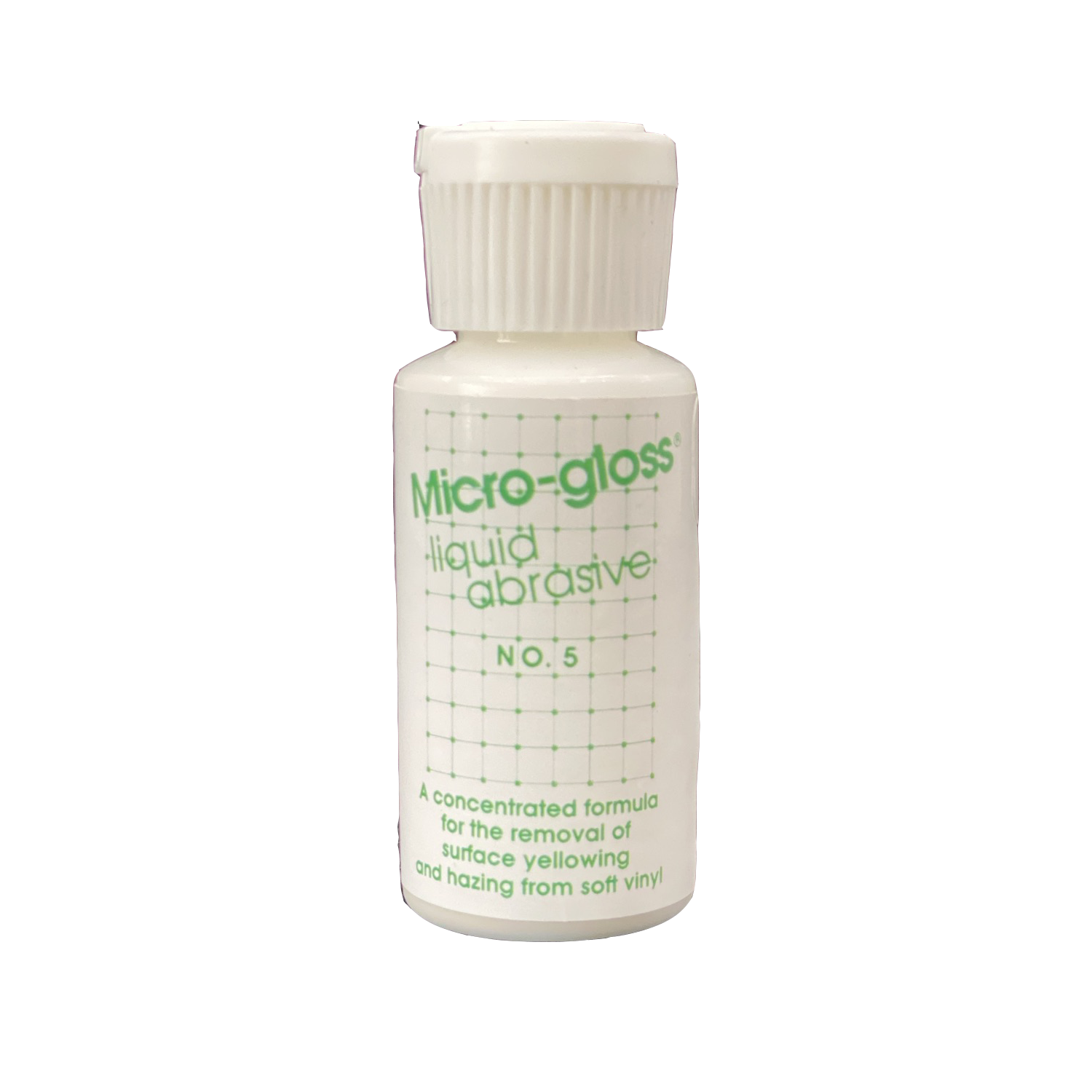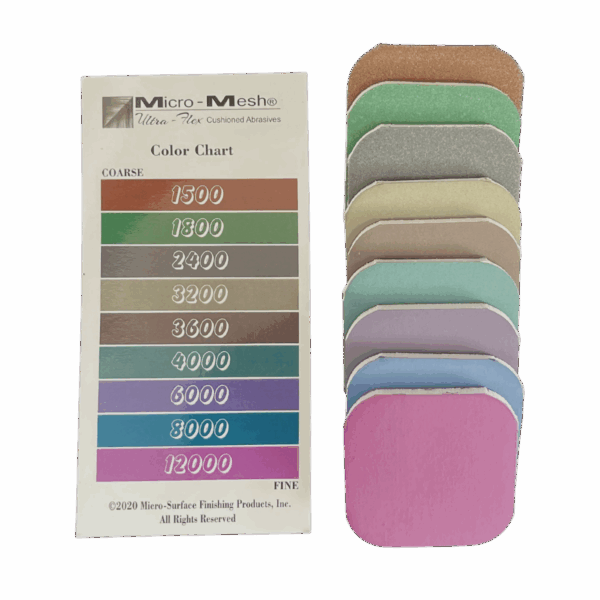Micro-Gloss #5 Liquid Abrasive (green label) is a stronger formulation than our standard, 1 micron Micro-Gloss®. Micro-Gloss #5 is approved as a Type II polish for aircraft canopies and will remove a 9 micron scratch. After using #5, follow this by using the standard Micro-Gloss for a crystal clear finish. Micro-Gloss #5 is a waterbase formulation and is environmentally safe. This concentrated cream does not cover damage or fill in damage – it removes it! Most cleaners and polishes contain products that can damage surfaces over time, Micro-Gloss #5 does not!
INSTRUCTIONS FOR USING MICRO-GLOSS #5
1. Flush the surface to be polished with water and wipe with a damp soft 100% cotton flannel cloth. Make sure all crevices are flushed free of dirt.
2. Slightly dampen a piece of flannel, apply a dime size drop of MICRO-GLOSS #5 (green label) to the cloth and rub briskly over a 1 square foot area. Work in a straight line pattern, applying firm pressure for 2 to 3 minutes or until MICRO-GLOSS (green label) has almost disappeared. Avoid using circular motions.
3. Continue in 1 foot squares, overlapping slightly.
4. Wipe entire surface with dry flannel cloth to remove any MICRO-GLOSS #5 residue.
5. Repeat steps 2 thru 4 above with MICRO-GLOSS (blue label).
6. MICRO-GLOSS #5 will remove damage 9 micron in depth. If damage is deeper remove with MICRO-MESH cushioned abrasives.
Note:
A. Use only 100% cotton flannel. Cotton Flannel pieces may be washed and re-used many times. Keep flannel material clean and dry when not in use. Do not use flannel cloth contaminated with dried MICRO-GLOSS or other compounds.
B. A lambswool polishing pad with a random orbital buffing machine may be used in place of the hand rubbing in Step 2. The buffer should be used with light pressure and should be kept moving across the surface using a straight-line pattern. Avoid moving the buffer in a circular motion. When using MICRO-GLOSS on Polycarbonate and acrylic, the buffer must be held flat against the surface and kept moving to avoid “dishing” the surface, causing distortion.


















